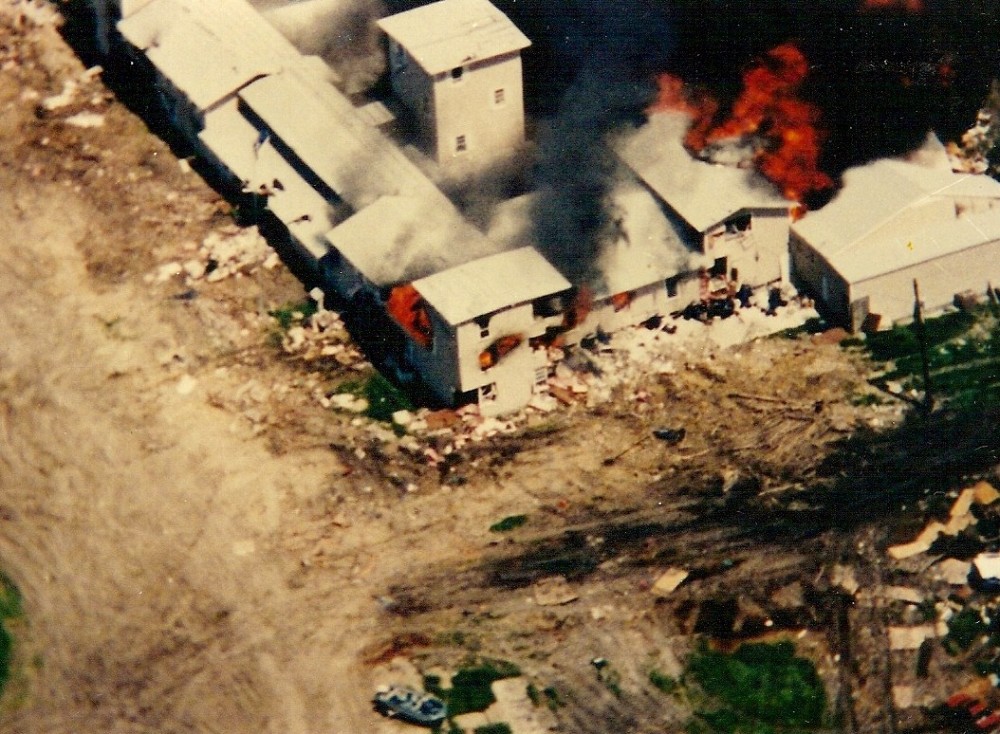Waco in red and blue
In April 1993, the FBI siege on the Branch Davidian compound ended in disaster. The event still casts a long shadow on our divided nation.

In April 1993, the FBI assault on a compound near Waco, Texas, led to a conflagration in which 80 members of the Branch Davidian sect perished, including 20 children. The horrific incident forced religious believers to explore the consequences of apocalyptic thought and fundamentalist faith, but it also contributed to popular debate over many other issues. Waco came to signify bitter divisions over matters as diverse as violence and gun ownership, trust in government and popular sovereignty, religious persecution, and issues of gender and masculinity. The disaster generated a flood of books, articles, news stories and television segments. It became an unavoidable part of public discourse. Waco became a vital topic in the nation’s newly declared culture wars, and we still live with its consequences.
The exact outline of the Waco affair is so disputed and controversial that it sometimes seems as if rival factions are describing utterly different events. What can be agreed on is that the Branch Davidians were a small apocalyptic-minded sect related to the Seventh-day Adventists and that they had been based near Waco for some 60 years at a settlement the sect called Mount Carmel.
From the late 1980s, the group was under the sway of a charismatic leader who took the messianic name David Koresh. Expecting an imminent end-time event, Koresh’s followers took their military preparations very seriously, buying a sizable stock of weapons. This attracted the attention of federal law enforcement agencies, who feared that the group was converting (legal) semiautomatic rifles into fully automatic machine guns, which was prohibited by law.




